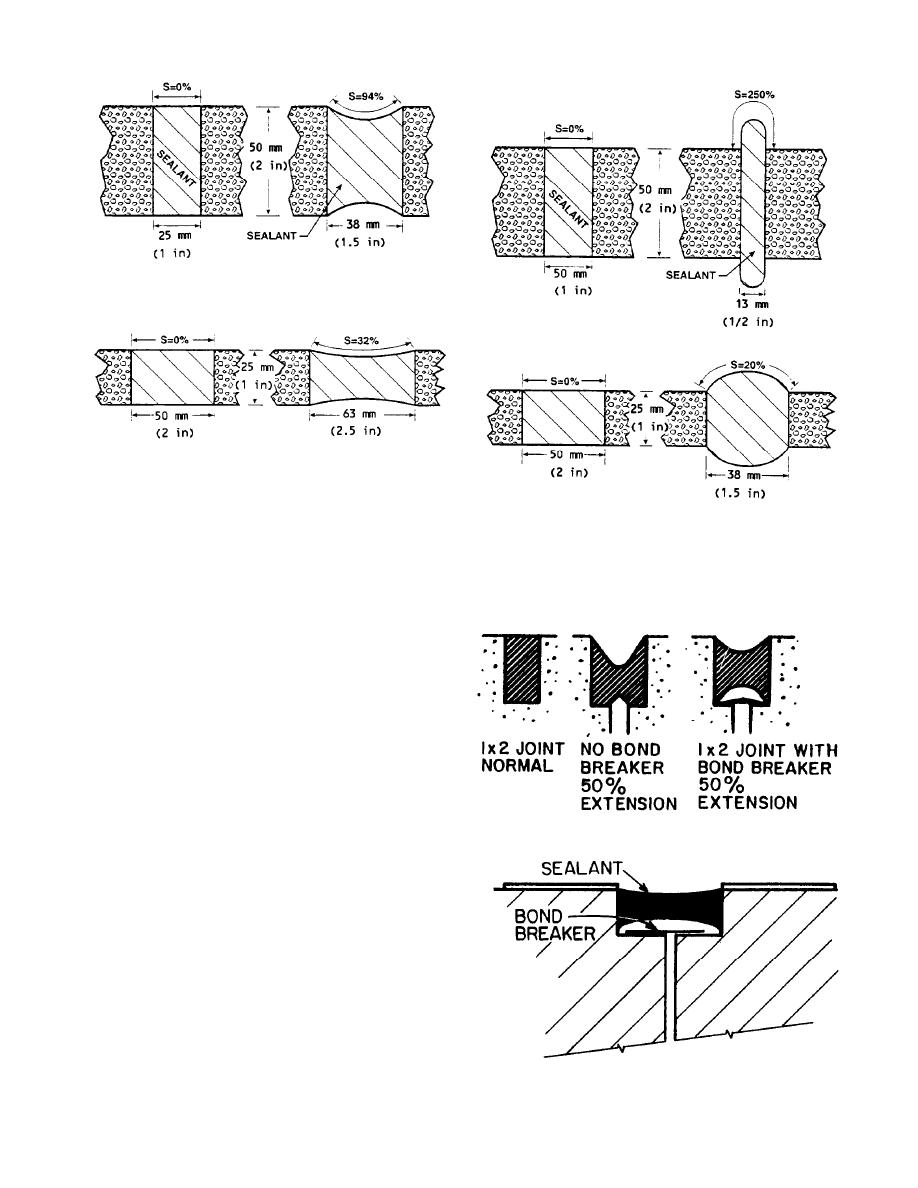
TM 5-805-6
S = SURFACE ELONGATION
Figure 1. Joint Extension.
S = SURFACE ELONGATION
percent in the narrow joint, but only 20 percent in
Figure 2. Joint Compression.
the wide joint.
(4) Effect of bond-breaker and backing. Figure
3 shows how the top surface elongation is greatly
increased when the sealant is bonded to the
bottom of the joint and the joint is elongated or
compressed. Figure 4 shows the location of a bond
breaker which prevents the sealant from adhering
to the bottom of the joint. Where the joint is
deeper than the sealant, a backing material is
used to support the sealant as shown in figure 5.
The backing may prevent adhesion, thus acting as
a bond breaker, or it may be sufficiently flexible to
move with the sealant.
Figure 3. Effect of Bond-Breaker.
e. Temperature. The maximum temperature
range that a joint must withstand depends on the
service temperature of the adjacent materials.
Service temperatures amy exceed ambient, as dis-
cussed below. Coefficients of thermal linear expan-
sion are quite different for various materials, as
listed in ASTM C 1193. Thermal expansion also
varies at different parts of the temperature range
and is affected by variations in thickness or
composition. As a result, when calculations require
an exact coefficient of thermal expansion of a
material, it is best obtained from the manufact-
urer of that specific material and for the exact
thickness and expected temperature range to be
Figure 4. Bond-Breaker in Shallow Joint.
2



 Previous Page
Previous Page
